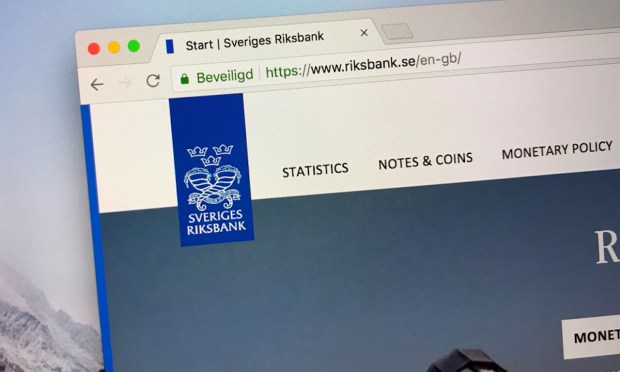Swedish Central Bank: CBDC Needs More Testing On Scale, Data Privacy

Perhaps the key takeaway of the testing is that … more testing is in order. The Swedish central bank (Riksbank) said it had conducted the first phase of its pilot tied to the creation and issuance of a central bank digital currency (CBDC). But there are challenges to grapple with, as detailed this week in a report titled “E-Krona Pilot Phase 1.” As reported early last year, the central bank had said the e-krona could eventually be used for banking functions — payments, deposits, withdrawals — from a digital wallet.
In a release that accompanied the new report, the bank said that “the solution based on blockchain technology that has been developed and tested by the Riksbank in its e-krona project provides new possibilities, but is also new and needs further investigation” as the use of cash declines.
The bank said that the first phase of the pilot, which was announced in late 2019, resulted in an e-krona network that simulated and tested the CBDC in an isolated environment, with simulated participants, end users and payment instruments such as mobile apps, cards and smartwatches. Next steps will include enlisting banks and other stakeholders to see how end users might use the digital currency in transactions.
The timeframe seems to stretch out a bit: The bank said it has renewed its agreement with Accenture (its partner in building out the technology underpinning the digital currency) through at least the next year.
Among the key issues identified to date: “The solution tested in phase one of the e-krona pilot has met the performance requirements made in the public procurement. But this has taken place in a limited test environment and the new technology’s capacity to manage retail payments on a large scale needs to be investigated and tested further,” the bank said in its report.
And, perhaps not surprisingly, data remains a key area of focus. The report noted that the bank is “currently analyzing to what extent the information stored in the transaction history can be regarded as information covered by banking secrecy and whether it comprises personal data.”
The Mechanics
In explaining the distribution model, the bank explained that the pilot’s model “is reminiscent of how physical cash is distributed today. Physical cash requires for natural reasons a logistics model with longer lead times than the digital e-krona, but from the perspective of roles and responsibilities, there are clear similarities.” One key similarity: Only the central bank can create and/or destroy e-krona. Another similarity is that the Riksbank has a relationship with the distributors of e-krona. And the network participants, in turn, have a relationship with the general public as end users.
But the bank also noted that an e-krona represented via digital token would require “technical aids, communications and participants who enable transactions. This means the e-krona possibly should not be regarded as belonging to the same asset type as cash, but should rather be seen as a new type of means of payment. This approach would probably require more extensive amendments to the legislation than if one were to regard the e-krona as the same type of asset as cash,” wrote the bank.
In addition, the report stated that (positive or negative) interest rates could, technically, be levied on e-krona holdings. The bank also cautioned that “the technical pilot solution that is developed in a closed test environment should not be interpreted as the solution the Riksbank has chosen for a potential e-krona, but as the method we have chosen as a concrete, possible, technical solution for analyzing policy issues, technical issues, security issues and legal issues pertaining to a potential e-krona.”
In other words, a lot could change, and perhaps markedly so, between the current testing phase and an eventual CBDC launch.
Read More On CBDCs:
- Swiss National Bank Chairman Says Retail CBDC Too Risky
- Swift Finds Connector Can Enable Wide Range of CBDC Transactions
- Hong Kong Kicks Off Wholesale CBDC Project
- GOP Pushes to Ban CBDCs Over Privacy Concerns
